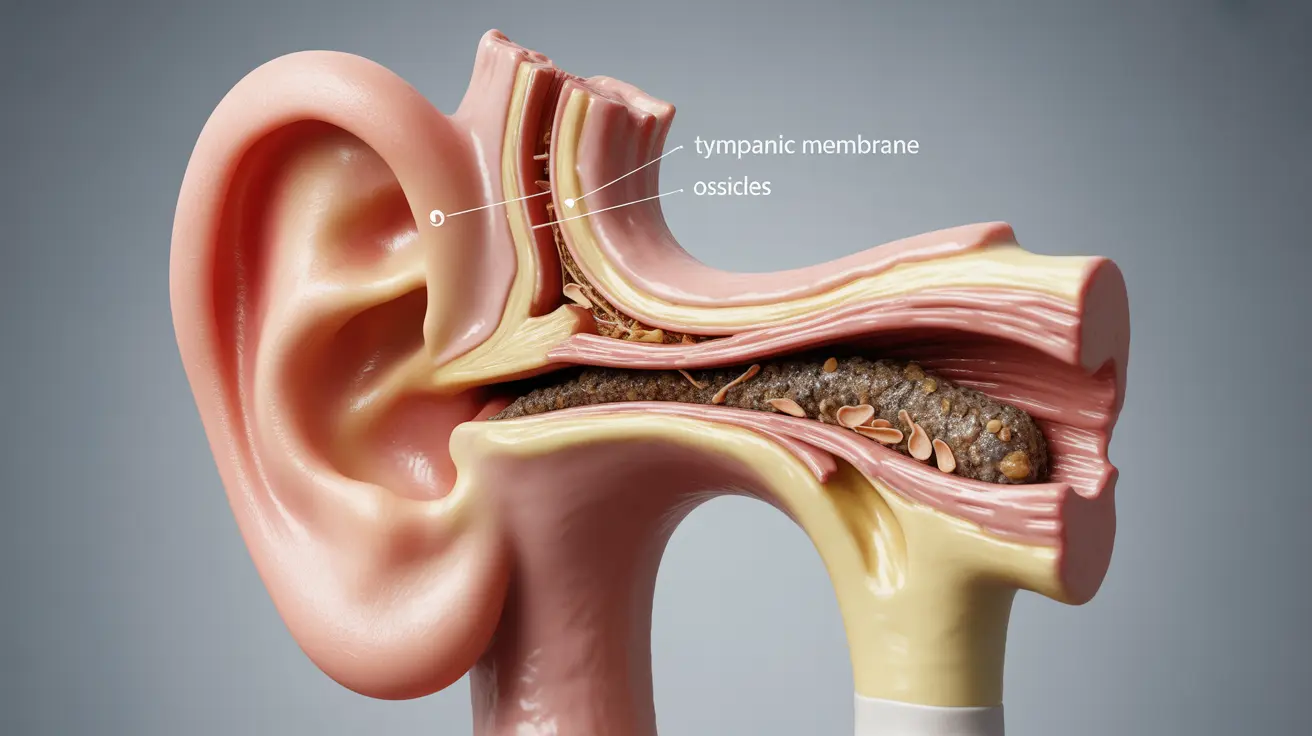Black earwax can be an alarming discovery, but understanding its causes and proper management is essential for maintaining ear health. While earwax naturally helps protect our ears, changes in its color and consistency can sometimes indicate underlying issues that deserve attention.
This comprehensive guide explores the reasons behind black earwax formation, safe removal methods, and important warning signs that warrant medical attention. We'll also discuss prevention strategies and proper ear care techniques to help you maintain optimal ear health.
Understanding Black Earwax Formation
Earwax, medically known as cerumen, serves as a natural protective barrier for our ear canals. The dark or black coloration typically occurs when regular earwax accumulates, oxidizes, and mixes with debris, dead skin cells, and other particles over time.
Common factors that contribute to black earwax formation include:
- Regular exposure to dust and pollution
- Heavy sweating
- Natural aging of earwax
- Excessive use of ear devices
- Chemical reactions with certain medications
Common Causes and Risk Factors
Environmental Factors
Environmental conditions play a significant role in the development of black earwax. People working in dusty environments or frequently exposed to air pollution may experience darker earwax due to the accumulation of environmental particles.
Device-Related Causes
Regular use of hearing aids, earbuds, or ear plugs can impact earwax composition and color. These devices can push earwax deeper into the canal and prevent natural clearing, leading to oxidation and darkening.
Safe Removal Methods
When dealing with black earwax buildup, it's crucial to use safe removal methods to avoid damaging your ears. Here are recommended approaches:
At-Home Care
Safe at-home treatment options include:
- Over-the-counter ear drops
- Gentle irrigation with warm water
- Using a soft washcloth on the outer ear only
- Commercial ear cleaning kits
Professional Removal
Healthcare providers can safely remove stubborn earwax using specialized tools and techniques, including:
- Microscopic visualization
- Gentle suction
- Professional irrigation
- Curette method
Prevention and Maintenance
Maintaining proper ear hygiene can help prevent black earwax buildup. Consider these preventive measures:
- Regular gentle cleaning of outer ear areas
- Avoiding cotton swab insertion
- Keeping ears dry after swimming
- Taking breaks from ear devices
- Using protective gear in dusty environments
Warning Signs and Medical Attention
While black earwax itself isn't usually dangerous, certain symptoms warrant medical attention:
- Persistent ear pain
- Hearing loss or changes
- Tinnitus (ringing in ears)
- Dizziness
- Drainage or bleeding
- Fever with ear-related symptoms
Frequently Asked Questions
What causes black earwax and is it a sign of any health problem?
Black earwax typically results from the oxidation of normal earwax combined with accumulated debris and dead skin cells. While usually not harmful, it can occasionally indicate excessive buildup or exposure to environmental pollutants. Regular examination by a healthcare provider can help determine if there are underlying concerns.
How can I safely remove or treat black earwax buildup at home?
Safe home treatment methods include using over-the-counter ear drops, gentle irrigation with warm water, or commercial ear cleaning kits. Never insert cotton swabs or other objects into your ear canal, as this can push wax deeper or cause injury.
When should I see a doctor for black earwax or related ear symptoms?
Seek medical attention if you experience persistent ear pain, hearing changes, dizziness, fever, or drainage. Professional evaluation is also recommended if home remedies don't resolve the buildup or if you have a history of ear problems.
Does using earbuds or hearing aids increase the risk of black earwax?
Yes, frequent use of earbuds, hearing aids, or earplugs can increase the risk of black earwax formation by preventing natural wax expulsion and potentially introducing additional debris. Regular cleaning of devices and taking periodic breaks can help minimize this risk.
How can I prevent black earwax and maintain healthy ear hygiene?
Maintain good ear hygiene by cleaning only the outer ear area, avoiding cotton swab insertion, keeping ears dry, and taking breaks from ear devices. Regular check-ups with a healthcare provider can help ensure proper ear health maintenance.




